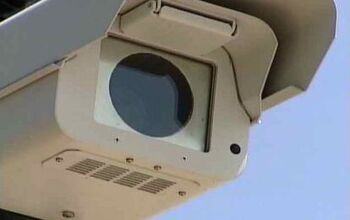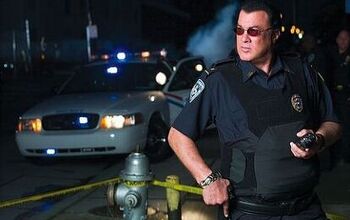Virginia DOT Defends Red Light Camera Study
In 2007, the Virginia Department of Transportation (VDOT) performed one of the most comprehensive statewide surveys of the impact of red light cameras on safety ( view report). It caused quite a stir upon its release. The study took advantage of seven years’ worth of data both before and after cameras were installed, examining a far more extensive dataset than most competing studies.
Despite the agency’s best effort to present automated enforcement in a positive light, the unavoidable results were that, on a statewide level, accidents and injuries increased where cameras were used. This outcome has proved to be an embarrassment for the Insurance Institute for Highway Safety (IIHS) which has been the primary organization generating research claiming that red light cameras improve safety. IIHS noted that VDOT essentially bent over backwards to accommodate the industry, but because the ultimate results were unfavorable, the VDOT report should be discarded.
“That the final conclusions of the [VDOT] study are guarded and more conservative than the results might suggest supports our belief that the negative results of the study cannot, and should not be cited and used as a deterrent to the implementation of red light camera programs,” a draft 2007 IIHS critique stated.
Essentially, IIHS argued that one should question the VDOT/Virginia Transportation Research Council (VTRC) study because the results conflicted with conclusions generated by IIHS itself.
“A large body of peer-reviewed research generally has found that camera enforcement reduces red light violations and injury crashes,” the final IIHS critique stated. “Results of a new study commissioned by the Virginia Transportation Research Council and completed in June 2007 appear to contradict these earlier findings, but there are significant methodological issues with the VTRC study that call into question the validity of its conclusions.”
The insurance industry’s financial interest in the issue of photo enforcement amounts to hundreds of millions of dollars annually. States like Arizona, California and Illinois impose license points on certain types of red light camera and speed camera tickets. That means for each photo ticket issued, the insurance companies have the legal right impose an annual monetary surcharge on the recipient of as little as $25 to as much as $1000 extra per year.
The draft insurance industry critique argued that VDOT’s model “underestimated” the benefits of red light cameras by using an improper statistical model influenced by the enforcement location selection process. IIHS chose two intersections and re-analyzed the data to illustrate the industry’s suspicion that VDOT’s methodology produced unfair results. VDOT countered this by doing a full-blown reanalysis following every IIHS recommendation.
“While findings regarding rear-end crashes and angle crashes did not change substantially, Table R1 below suggests that the approaches suggested by the reviewers would have caused red light running crashes to increase slightly,” VDOT explained in its response to IIHS.
Specifically, instead of a 42 percent increase in rear-end collisions, the cameras would be associated with a 48 percent increase in accidents. Angle collisions would increase 30 percent instead of 20 percent and “red light running” accidents would increase 15 percent.
In the final, published version of its paper, IIHS dropped the concrete analysis of VDOT’s equation but retained the vague criticisms about how the “highly unusual crash prediction model” was “unreliable.” In a November 2008 email, VDOT Associate Principal Research Scientist John Miller said that he intended to ask IIHS to include VDOT’s response on its website.
As of January 2010, IIHS had not done so. VDOT posted all of the raw data for its report online, inviting independent analysis and critique as the agency finalized its work. IIHS does not provide any raw data on its website that would allow independent verification of the industry’s claims.
View the full VDOT/VTRC point-by-point response in a 170k PDF file at the source link below. The draft of the IIHS report is provided with VDOT’s comments (“authors’ response”) given in gray shaded boxes.
Peer Review of 2007 VTRC Study and Author Response (IIHS / Virginia Transportation Research Council, 11/1/2007)
More by The Newspaper
Latest Car Reviews
Read moreLatest Product Reviews
Read moreRecent Comments
- MaintenanceCosts I wish more vehicles in our market would be at or under 70" wide. Narrowness makes everything easier in the city.
- El scotto They should be supping with a very, very long spoon.
- El scotto [list=1][*]Please make an EV that's not butt-ugly. Not Jaguar gorgeous but Buick handsome will do.[/*][*] For all the golf cart dudes: A Tesla S in Plaid mode will be the fastest ride you'll ever take.[/*][*]We have actual EV owners posting on here. Just calmly stated facts and real world experience. This always seems to bring out those who would argue math.[/*][/list=1]For some people an EV will never do, too far out in the country, taking trips where an EV will need recharged, etc. If you own a home and can charge overnight an EV makes perfect sense. You're refueling while you're sleeping.My condo association is allowing owners to install chargers. You have to pay all of the owners of the parking spaces the new electric service will cross. Suggested fee is 100$ and the one getting a charger pays all the legal and filing fees. I held out for a bottle of 30 year old single malt.Perhaps high end apartments will feature reserved parking spaces with chargers in the future. Until then non home owners are relying on public charge and one of my neighbors is in IT and he charges at work. It's call a perk.I don't see company owned delivery vehicles that are EV's. The USPS and the smiley boxes should be the 1st to do this. Nor are any of our mega car dealerships doing this and but of course advertising this fact.I think a great many of the EV haters haven't came to the self-actualization that no one really cares what you drive. I can respect and appreciate what you drive but if I was pushed to answer, no I really don't care what you drive. Before everyone goes into umbrage over my last sentence, I still like cars. Especially yours.I have heated tiles in my bathroom and my kitchen. The two places you're most likely to be barefoot. An EV may fall into to the one less thing to mess with for many people.Macallan for those who were wondering.
- EBFlex The way things look in the next 5-10 years no. There are no breakthroughs in battery technology coming, the charging infrastructure is essentially nonexistent, and the price of entry is still way too high.As soon as an EV can meet the bar set by ICE in range, refueling times, and price it will take off.
- Jalop1991 Way to bury the lead. "Toyota to offer two EVs in the states"!


































Comments
Join the conversation
As soon as there is GPS-speed limiters in vehicles, all this will be moot. This technology is possible, so why ain't the IIHS pushing it? I agree that the story here reminded me of the seeming selective use, misuse, and abuse of data within the ACGW circles... Follow the money... and you will arrive at the methods ... follow the money further ... and you will arive at the motivations ... follow it yet further and you will arrive at the recipients!
As soon as there is GPS-speed limiters in vehicles, all this will be moot. This technology is possible, so why ain't the IIHS pushing it? I agree that the story here reminded me of the seeming selective use, misuse, and abuse of data within the ACGW circles...Follow the money... and you will arrive at the methods ... follow the money further ... and you will arive at the motivations ... follow it yet further and you will arrive at the recipients!